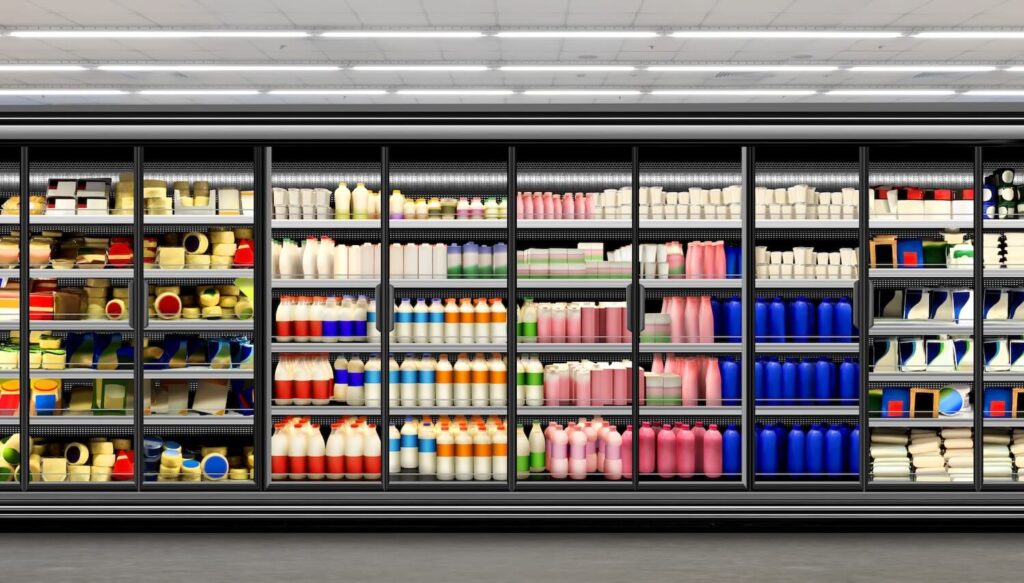
Commercial refrigeration is a crucial asset for businesses such as restaurants, grocery stores, and healthcare facilities. These systems ensure that perishable goods stay fresh, safe, and compliant with industry regulations. When a commercial refrigerator malfunctions, it creates an urgent question for business owners and facility managers: should you repair the existing unit or replace it altogether? Each option comes with its own advantages, challenges, and long-term cost implications.
This article explores the factors you need to consider, helping you make an informed decision that balances reliability, cost, and business needs.
1. Recognizing Common Service Issues with Commercial Refrigerators
Before deciding whether to repair or replace, it’s essential to recognize common problems that arise with commercial refrigeration units. Understanding these issues helps identify whether they can be resolved through repairs or if they indicate a larger underlying problem.
Refrigeration Temperature Inconsistencies
One of the most pressing concerns for commercial refrigeration is temperature control. When temperatures fluctuate, stored products can spoil, risking health and safety standards in industries like food service. Temperature issues can stem from several causes, including a malfunctioning thermostat, compressor issues, or airflow blockages.
- When to Repair: If the cause is a faulty thermostat or an obstructed vent, these parts can often be repaired or replaced without significant expense.
- When to Replace: If temperature inconsistencies are frequent and persistent despite repairs, the refrigerator may be losing efficiency. In these cases, a new unit will save you more in the long run by maintaining stable temperatures.
Refrigerator Leaking Water
A leaky refrigerator can indicate several potential problems, including drainage blockages, gasket issues, or faulty seals. Water leakage, if ignored, can lead to mold growth and create slippery, hazardous conditions on nearby floors.
- When to Repair: Drainage issues or gasket replacements are often simple, cost-effective fixes. Regularly checking and maintaining these components can prevent leaks.
- When to Replace: If leaks recur frequently despite repairs, it might indicate a failing seal or structural wear that cannot be permanently repaired, signaling a need for replacement.
Unusual Refrigerator Noises
Commercial refrigeration units should operate with minimal noise, so strange sounds like buzzing, clanging, or rattling often signal a problem with critical components such as the compressor or evaporator fan.
- When to Repair: If the noise is caused by a loose part or a minor issue with the fan, repairs are usually affordable. A technician can often identify and fix the problem quickly.
- When to Replace: Persistent or worsening noise often means that a major component is breaking down, which may be costly to fix. If the refrigerator is older, a replacement may be a better investment.
Increased Energy Bills
An older or malfunctioning refrigerator often requires more energy to maintain consistent temperatures, leading to unexpectedly high utility bills.
- When to Repair: If the rise in energy costs is due to a simple issue, such as dirty condenser coils, cleaning or replacing the part can improve efficiency.
- When to Replace: If the refrigerator’s inefficiency is due to aging components or overall wear and tear, a new energy-efficient model will likely reduce operating costs significantly over time.
2. Cost Analysis: Repair vs. Replacement
When facing commercial refrigeration repairs issues, cost is a major factor in the decision to repair or replace. Breaking down the costs can help you decide which route is most economically sound.
Repair Cost Percentage
A common industry guideline suggests that if the repair cost exceeds 50% of the price of a new unit, it may be more practical to invest in a replacement. For example, a $1,500 repair on a refrigerator worth $2,500 could be a poor investment, particularly if the unit is older. Conversely, a small repair on a newer model often makes financial sense.
Refrigeration Unit Age
The typical lifespan of commercial refrigerators ranges between 10 to 15 years, though this can vary based on brand, usage, and maintenance quality. Units over 10 years old are more prone to breakdowns and inefficiencies.
- When to Repair: A unit under five years old is likely worth repairing if it has been well-maintained, as it should have several years of life left.
- When to Replace: If the unit is nearing or has exceeded its typical lifespan and repair needs are increasing, a new refrigerator is often a sounder investment.
Energy Efficiency Savings
Newer refrigeration units are generally more energy-efficient, especially models that meet Energy Star standards. Although purchasing a new refrigerator is a higher upfront cost, energy savings can quickly accumulate, helping the new unit pay for itself over time.
- When to Repair: Minor repairs on an energy-efficient model can extend its life and retain its cost savings.
- When to Replace: If your current unit lacks energy-saving features or is causing a significant increase in utility bills, upgrading can yield substantial long-term savings.
Refrigerator Warranty Status
Warranties provide coverage for repairs, making them more cost-effective.
- When to Repair: If the refrigerator is still under warranty, repair costs may be partially or fully covered, making repairs a financially viable option.
- When to Replace: Once the warranty expires, consider whether frequent out-of-pocket repairs justify the cost or if a new, warrantied unit is more worthwhile.
3. When to Repair: Situations Where Fixing Makes Sense
Repairs are often the most practical solution for newer refrigerators or when problems are minor and isolated.
- Minor Component Replacements: Minor issues like a worn gasket, a broken door handle, or a clogged drain are generally inexpensive and quick to fix, allowing the refrigerator to function effectively for years to come. Small component replacements are usually affordable and don’t compromise the unit’s overall performance.
- Routine Maintenance Needs: Sometimes performance issues are simply due to a lack of maintenance. Dust and debris can clog components, making the refrigerator work harder to cool effectively. Regular cleaning, especially of coils and vents, can resolve these problems and prevent more significant issues from arising.
- Emergency Fix for Budget Constraints: If budget constraints prevent purchasing a new refrigerator, a repair may be a short-term solution to keep operations running. However, it’s important to monitor repair costs to avoid spending more in the long run than a replacement would cost.
- Still Covered Under Warranty: For newer units still under warranty, repairing rather than replacing is typically the smarter choice, as repair costs may be covered or reduced. If a major component like the compressor or evaporator is covered, it can significantly reduce expenses.
4. When to Replace: Signs That It’s Time for a New Appliance Unit
Replacement may be the more cost-effective solution in cases where the unit is older or experiencing serious problems. Here’s when you might want to consider buying a new commercial refrigerator:
Frequent and Costly Repairs
If you find yourself scheduling repairs every few months, those expenses can quickly add up, disrupting your budget and operations. Replacing the refrigerator can be a wise financial decision, saving you from ongoing repair costs and operational delays.
End of Expected Lifespan
Commercial refrigerators nearing or exceeding the 10- to 15-year mark are likely past their peak in terms of efficiency and reliability. The risk of breakdowns increases as components age, and parts for older units can become harder to find and more expensive to replace.
Increasing Energy Bills
Aging refrigeration units often lose efficiency, causing them to work harder to maintain cool temperatures, which results in higher energy bills. Switching to an energy-efficient model can yield considerable savings on utility costs, helping offset the initial expense.
Health and Safety Standards
In industries like food service and healthcare, reliable temperature control is essential for compliance with health and safety regulations. If a unit is unable to maintain the correct temperature range consistently, it could lead to spoilage and even fines from health inspections. In these cases, replacing the unit is often the safest decision.
5. Benefits of Investing in a New Commercial Refrigerator
Choosing to invest in a new commercial refrigerator might be a big expense upfront, but it can offer substantial benefits that make the investment worthwhile over time.
Improved Efficiency and Lower Operating Costs
Newer refrigerators are designed with advanced technology that optimizes energy usage. This can lead to a reduction in operating costs, which is especially important for businesses that rely heavily on refrigeration.
Enhanced Reliability
A new refrigerator reduces the likelihood of unexpected breakdowns, allowing you to focus on running your business without interruption. Additionally, most new units come with warranties on key components, providing financial protection and peace of mind.
Better Temperature Control and Food Safety
Modern units offer more precise temperature controls, which is critical for food and pharmaceutical storage. These systems are often designed to maintain tighter tolerances, reducing spoilage risk and helping you comply with industry regulations.
Eco-Friendly Options
New models often use environmentally friendly refrigerants and comply with eco-friendly standards, reducing your carbon footprint. This is not only beneficial for the environment but can also improve your brand’s reputation as an eco-conscious business.
6. Apply Practical Tips for Extending the Life of Your Commercial Refrigerator
Whether you decide to repair or replace, proper maintenance is essential for maximizing the lifespan and performance of your commercial refrigerator.
- Regular Cleaning: Dust and dirt can accumulate on condenser coils and fans, making the unit work harder. Cleaning these parts at least every three months can help prevent strain on the system and avoid unnecessary repairs.
- Temperature Monitoring: Regularly monitoring internal temperatures helps ensure the unit maintains the correct range. If you notice frequent fluctuations, this can indicate an underlying problem that should be addressed promptly.
- Seal and Gasket Checks: A worn or damaged door seal can let cold air escape, causing the unit to use more energy. Routinely inspect seals and replace them when necessary to avoid efficiency losses.
- Scheduled Professional Inspections: Having a professional technician inspect your refrigerator every six months can help identify potential issues early, allowing for preventive measures that extend the unit’s lifespan.
Conclusion
The decision to repair or replace a commercial refrigerator depends on a variety of factors, including cost, age, reliability, and energy efficiency. Minor issues and newer units often justify repairs, while older models and persistent problems may signal the need for a replacement. By weighing these factors carefully, you can make the best decision for your business, helping to ensure safe and efficient refrigeration for years to come.
